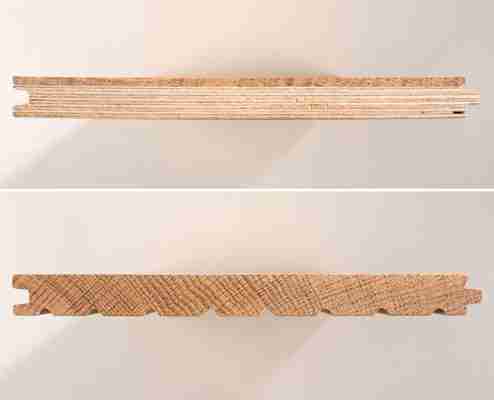November 01,2022
How to Choose & Install Hardwood Floors: A Complete Guide
by Jennifer Cameron inGarden Style
The choice of flooring is one of the most basic yet important decisions a homeowner has to make when undertaking a renovation, as it underpins everything else. While there are plenty of different options, from carpet to terrazzo, one material is the acknowledged standard: hardwood.
But not all hardwood flooring is created equal, and selecting a product isn’t simply a matter of choosing a preferred color. A range of other factors can have an impact on both aesthetics and performance.
To explore the many options available, we spoke with three experts: Scott Jones, director of product management at Carlisle Wide Plank Floors ; James Caroll, principal of LV Wood ; and Mara Miller, partner at the AD100 firm Carrier and Company Interiors . Once you find the perfect fit for your space, you'll need to think about installation. While may choose to hire a professional to install their floors, some intrepid homeowners go the DIY route. If you're ready to tackle the project yourself, Tony Pastrana, installation systems developer at Armstrong Flooring , shared his advice on how to install your own flooring.
How to Choose Hardwood Flooring
1. Select Solid or Engineered Flooring
Traditionally, hardwood flooring came in thick planks of solid timber. Today, solid hardwood is still widely available, but many companies also offer engineered flooring—planks made with a thinner top layer of hardwood, bonded to other layers designed to prevent the floor from shifting during expansion and contraction cycles. “All wood moves in three directions: There’s tangential, radial, and longitudinal movement,” says Jones. “With engineered products, you’re creating opposing forces within the board to try to restrict the natural movement of the wood.”
For basements and apartments with concrete subfloors, engineered flooring offers an installation advantage. Whereas solid wood is generally installed over one or two layers of plywood, which can raise the height of a floor and interfere with existing doors or marginally reduce ceiling height, “engineered flooring can be glued directly to concrete, or over a soundproofing mat,” says Caroll. “It’s also suitable for installation over radiant heat.”
But choose carefully because some engineered floors have top layers so thin that they can’t be sanded and refinished in the future. Higher-quality products feature a thicker layer where “you’re getting as much usable wood as you would out of a solid board,” says Caroll, noting that with solid hardwood, “you can only use the part above the tongue and groove for refinishing.”

